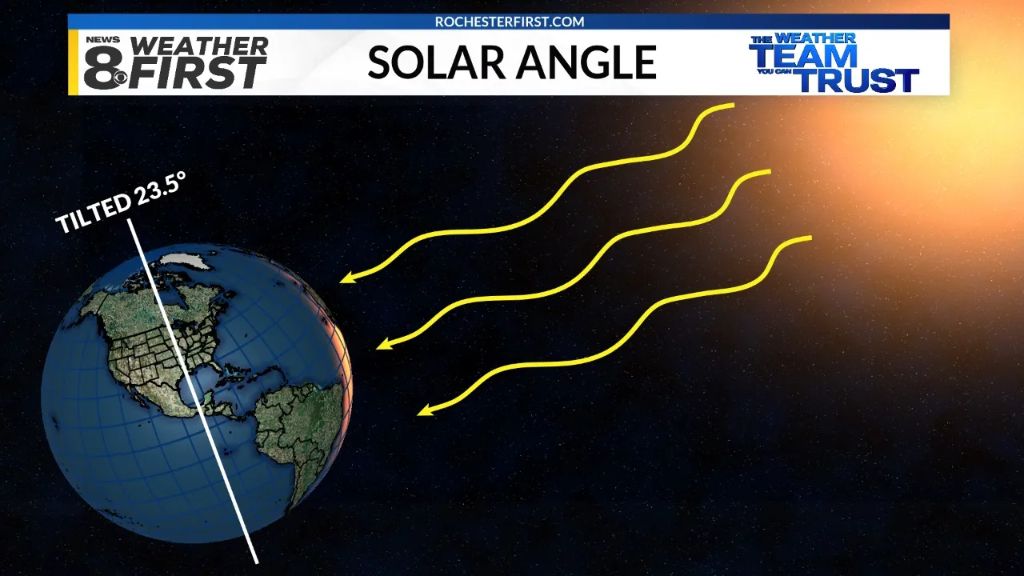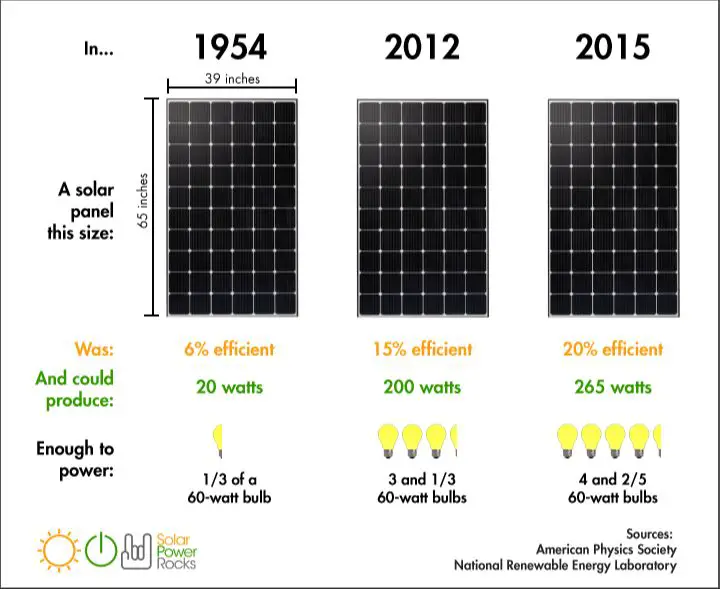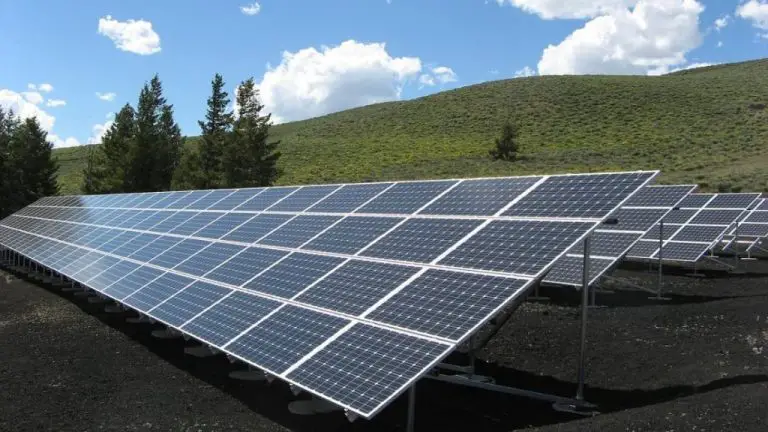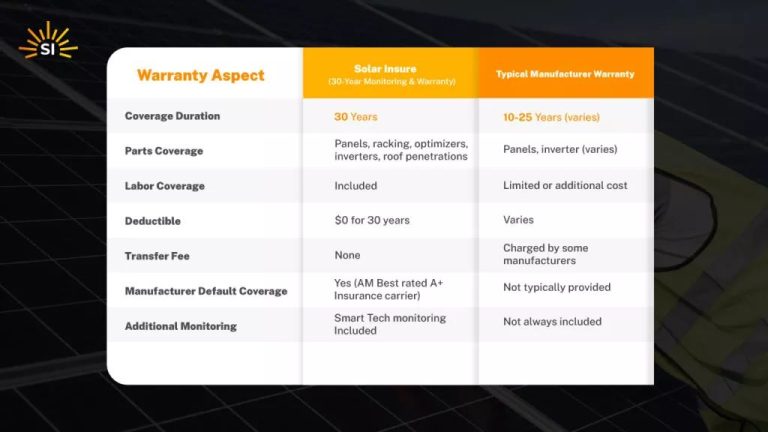Does Solar Mean Sun?
Etymology of ‘Solar’

The word “solar” traces back to the Latin word “solaris” meaning “of or relating to the sun.” This derives from the Latin word “sol” meaning “sun.” Related words like the French “soleil” meaning “sun” and English “solstice” meaning “either of the two points on the ecliptic at which its distance from the celestial equator is greatest” also stem from the Latin “sol.” The first known use of the word “solar” in English was in the year 1390.
The Online Etymology Dictionary notes that the Latin “sol” goes back further to the Proto-Indo-European root “*sawel-” meaning “the sun.” This root is also where the Greek “helios” meaning “sun” originates. So the word “solar” has its origins in ancient words for “sun” dating back thousands of years.
In summary, “solar” derives from the Latin “solaris” meaning “of or relating to the sun.” It shares its origins with many related words in Latin, Greek, and other languages that reference the sun.
“Solar” as an Adjective
The word “solar” is commonly used as an adjective to describe things related to the sun. The origin of the word “solar” as an adjective comes from the Latin adjective “solaris”, meaning “of the sun”.[1] For example, you might refer to solar energy, the solar system, or solar panels – all things related to the power and light provided by the sun.
“Solar” as an adjective is used to specifically describe the relationship of an object or concept to the sun itself. This is different from just using the word “sun” as an adjective. For example, you would talk about solar power from solar panels, not sun power. The adjective “solar” conveys the direct relationship to the sun as a core part of the concept being described.
Some common examples of using “solar” as an adjective include:
- Solar energy – Energy derived from the sun’s rays, as captured through solar panels.
- Solar system – The system of planets, comets, and other objects orbiting around the sun.
- Solar flare – A burst of radiation released from the sun during magnetic activity.
- Solar eclipse – When the moon passes directly between the Earth and sun, blocking the sun’s light.
- Solar panel – A device containing solar cells to capture energy from sunlight.
In all of these examples, the adjective “solar” indicates a direct relationship, dependency on, or origin from the sun itself. This helps convey more specific information than just using adjectives like “sun-powered” or “sun-related.” When used as an adjective, “solar” taps into concepts of solar deities, solar symbolism, and the central role the sun plays in our solar system.
Solar Deities
Throughout history, solar deities representing the sun or aspects of it have played an important role in mythologies around the world. In ancient times, gods associated with the sun occupied a central place in many religions and were revered for bringing light and life. Some examples of well-known solar deities include:
In Egyptian mythology, Ra was the powerful sun god, often depicted with a falcon’s head surmounted by a solar disk. Ra’s journey across the sky in his solar barge represented the passage of the sun.
In Greek and Roman mythology, Apollo was the god of sunlight, prophecy, music, healing, and plague. He was one of the most important gods in the Greek pantheon.
Sol Invictus was the official sun god of the later Roman empire. His festival was celebrated on December 25, which the early Christian church adopted as the date for Christmas.
In Norse mythology, the sun goddess Sól drove the chariot of the sun across the sky each day. She was pursued by the wolf Sköll who sought to devour her.
These and other solar deities highlight the supreme importance many ancient cultures placed on the sun in their mythologies and religions.
Solar Symbolism
The sun has held deep symbolic meaning across cultures and eras. It has long been associated with attributes like life, power, and truth. According to Spiritual Meanings, in ancient China the sun represented male energy and dominance as the singular Yang force. In Egyptian mythology, the sun god Ra was considered the primary deity and the source of all life. The ancient Celts also worshipped the sun, believing it was the visible, physical representation of the non-physical creative spirit source.
As noted by Dreamersia, the sun’s consistent rising and setting makes it a symbol of constancy, reliability, and cycles. It provides warmth and light, allowing crops to grow and life to flourish. This radiance and vitality is why the sun has been associated with growth, health, knowledge, clarity, and enlightenment across belief systems and cultures.
The sun’s position high in the sky has led to it representing lofty ideals like truth, justice, and nobility. The Ancient Greeks linked the sun to ideals of truth through Apollo, god of light. In tarot, the sun card represents vitality, success, and abundance. Across literature and art, sunlight shining on a subject is used to represent revelation, truth, and new beginnings.
Solar Power
Solar power refers to harnessing the sun’s energy and converting it into electricity through the use of photovoltaic solar panels. The solar power industry has experienced tremendous growth in recent years. According to the Solar Energy Industries Association (SEIA), the solar industry has grown at an average annual rate of 24% over the last decade.
The growth of the solar industry is being driven by several factors. Firstly, the cost of solar panels has declined dramatically, making solar energy more affordable and competitive with conventional energy sources. In addition, government incentives like the federal solar Investment Tax Credit have further accelerated solar adoption. According to SEIA, the US installed 6.5 gigawatts of new solar capacity in Q3 2023, representing a 35% increase compared to the previous year.
Solar power offers many benefits that account for its growing popularity. Solar energy is a renewable and clean source of power that produces no emissions. Widespread use of solar can reduce reliance on fossil fuels and improve public health and environmental quality. Solar also enhances energy independence and grid resilience. For homeowners and businesses, solar panels can reduce electricity bills and provide a hedge against future utility rate hikes.
In summary, solar power is an increasingly important solution for reducing carbon emissions and meeting energy needs sustainably. Technological improvements and supportive policies have enabled exceptional growth within the solar industry.
Solar System
The solar system consists of the sun and everything that orbits around it, including planets, moons, asteroids, comets and meteoroids. At the center of the solar system is the sun, which contains 99.8% of the solar system’s mass and provides the light and heat that support life on Earth and other planets.
There are 8 major planets orbiting the sun. The inner solar system planets are Mercury, Venus, Earth and Mars. The outer solar system planets are Jupiter, Saturn, Uranus and Neptune. Pluto was previously classified as a planet but in 2006 was reclassified as a dwarf planet.
The planets orbit the sun on a plane called the ecliptic. Most planets rotate and revolve counter-clockwise relative to the sun. Each planet has unique physical characteristics and revolves around the sun at different distances and speeds. Earth is the only planet known to have life. The order of the planets from the sun is: Mercury, Venus, Earth, Mars, Jupiter, Saturn, Uranus, Neptune.
In addition to the planets, the solar system contains over 5 dwarf planets, hundreds of moons and millions of asteroids, comets and meteoroids. The sun’s gravity keeps everything in orbit, while its energy powers dynamic systems throughout the solar system.
[1] https://www.nationalgeographic.org/topics/solar-system-101/
Solar Calendar
Many ancient calendars were solar calendars, meaning they were based on the solar year. A solar year is the time it takes for the Earth to orbit the Sun, which is approximately 365.24 days.
In a solar calendar, the months roughly correspond to the solar year and astronomical seasons. Most solar calendars have 12 months, with 365 or 366 days in a year. They adhere to the tropical or solar year, which is the time from equinox to equinox, or solstice to solstice. This makes solar calendars consistent with the seasons.
Ancient examples of solar calendars include the Egyptian calendar, the Julian calendar of ancient Rome, and the Hindu calendar, among others. Early solar calendars were often inaccurate, since ancients did not precisely know the length of the solar year. Over time, solar calendars like the Julian calendar were reformed to better match the tropical year. Source
Today, the Gregorian calendar used worldwide is a solar calendar, with 365 days in a common year and 366 days in a leap year. The Gregorian calendar was introduced in 1582 to correct for discrepancies in the Julian calendar. It continues to provide an accurate annual measure of the solar year and seasonal cycle for modern society.
Solar Eclipses
A solar eclipse occurs when the moon moves between the sun and Earth, blocking the sun’s light and casting a shadow on Earth. There are three types of solar eclipses:
Total solar eclipse – The moon completely blocks the sun’s disk, causing day to turn into darkness. The sun’s outer atmosphere (corona) becomes visible and the horizon takes on a somber, twilight glow.
Partial solar eclipse – The sun and moon are not perfectly aligned, so the moon does not completely cover the sun. This causes a “bite” out of the sun’s disk.
Annular solar eclipse – The moon is farther away from Earth and appears smaller than the sun. This causes the moon to block the sun’s center, leaving a bright ring (annulus) of sunlight visible around the moon.
Solar eclipses occur about two to five times per year and are visible from only a small area on Earth. A total solar eclipse is visible from any given location about once every 360-410 years.
Some key facts about solar eclipses:
- They can last from a few seconds to over 7 minutes for totality.
- The moon’s umbral shadow can be up to 270 km wide and races across Earth at over 3,000 km/h.
- Animals exhibit strange behavior during an eclipse, reacting to the abrupt darkness.
- Seeing a total solar eclipse is considered one of the most magnificent natural phenomena.
Sources:
https://www.space.com/15584-solar-eclipses.html
https://www.astronomy.com/observing/how-often-do-solar-eclipses-occur/
Solargraphy
Solargraphy is a unique form of photography that captures the sun’s path across the sky over an extended period of time, from days to months or even years. It involves using a pinhole camera fixed in place to create long-exposure images showing the sun’s movement [1]. The resulting pictures reveal stunning solar trails in the sky.
To create a solargraph, a simple pinhole camera is made using materials like a can, cardboard, aluminum foil, photographic paper or film, and tape [2]. The camera is positioned to face the sky and left in place for weeks or months. The pinhole acts like a lens, projecting an inverted image of the sun’s path onto the paper or film inside the can. This extremely long exposure captures the arc of the sun across the seasons.
Solargraphs are an artistic way to track the subtle shift in the sun’s position over time. They can illustrate the cardinal directions, changes in seasons, and the analemma or figure-8 shape that results from the tilt of the Earth’s axis. Solargraphy requires patience but produces mesmerizing solar trails.
Conclusion
In summary, the word “solar” most commonly refers to things related to the sun. The word comes from the Latin word “solaris” meaning “of the sun”. While it is often used in a scientific context to refer to the sun and things powered by or related to it, like solar energy and the solar system, “solar” also has broader symbolic and cultural meanings.
In mythology and symbolism, solar often refers to solar deities that personify the sun, as well as concepts like solar symbolism related to the spiritual or transformational meaning assigned to the sun and sunlight. The sun has held deep significance across cultures for millennia.
So while the adjective “solar” today most typically describes things related to the sun in astronomy and science, its etymological and cultural roots reveal a richer symbolic meaning as well. When we talk about something being solar, it not only means it is related to the physical sun, but also carries these grander associations of the sun and its profound importance across civilizations.







